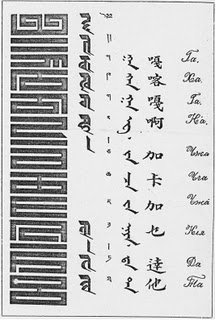BabelStone Blog
Sunday, 24 December 2006
Phags-pa Fonts 2 : BabelStone Phags-pa Tibetan
I have now released two Tibetan style Phags-pa fonts, unimaginatively named "BabelStone Phags-pa Tibetan A" and "BabelStone Phags-pa Tibetan B", which may be downloaded from here.
BabelStone Phags-pa Tibetan A
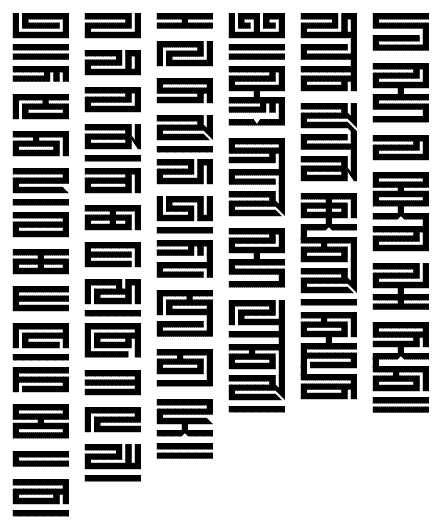
BabelStone Phags-pa Tibetan B
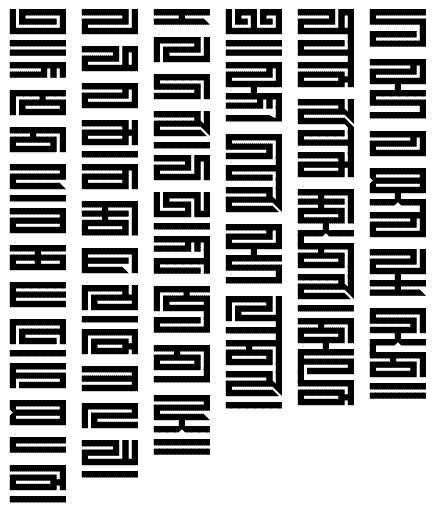
These fonts are both modelled on Phags-pa script primers such as the example below (with Lantsa, Tibetan, Mongolian, Chinese and Cyrillic) obtained by a Buriat Cossack officer, Tsokto Garmeyevich Badmazhapov, in 1903. The only difference between the two fonts is that the letters THA [U+A849], MA [U+A84F], TSHA [U+A851], DZA [U+A852], WA [U+A853], ZHA [U+A854], SHA [U+A85A] and Subjoined RA [U+A871] have slightly different letterforms.
Source : Nicholas Poppe, The Mongolian Monuments in ḤP'AGS-PA Script (Otto Harrassowitz, 1957) page 16.
The Tibetan style of Phags-pa script, known in Tibetan as hor-yig gsar-pa ཧོར་ཡིག་གསར་པ་ "New Mongolian letters" is a distinctive style of the Phags-pa script that is used to a limited extent in Tibet and Mongolia as a decorative script for engraving seals, inscribing book titles on the covers of traditional pecha books, and for architectural inscriptions such as those found on temple columns and doorways. However, the script is not used for writing texts.
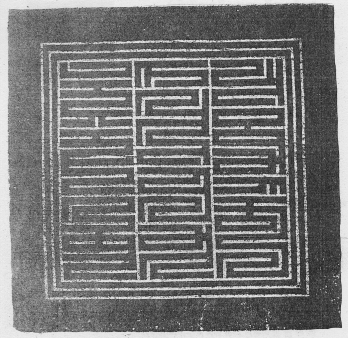
The Tibetan style of Phags-pa script is squarer and more compact than the original script used during the Yuan dynasty, but like its predecessor it is still written in vertical columns running from left to right. Some consider this to be a separate script, distinct from the Yuan dynasty Phags-pa script, but I do not subscribe to this point of view as the only significant difference between modern Tibetan Phags-pa script and Yuan dynasty Phags-pa script is the stylization of the letterforms. In fact, the same compact, square letterforms can already be seen in some Yuan dynasty inscriptions, such as this title inscription (碑額) on a monument dated 1289, where some letters are identical to Tibetan style Phags-pa letters, whilst other letters use more typical seal script forms.
重修崇慶院之記
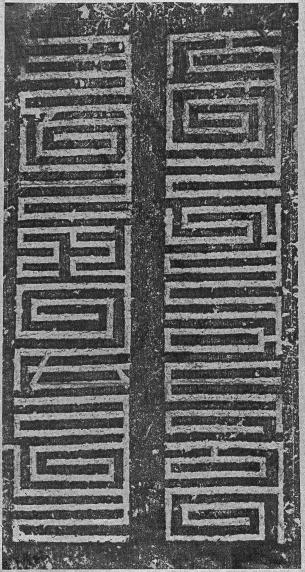
And for comparison, here is the same inscription as written in typical Tibetan style Phags-pa letters (BabelStone Phags-pa B). Notice in particular how the letters A and NA in the word 'wen (院) halfway down the second column are identical to the forms used in the 1289 inscription.
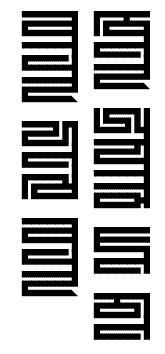
It is clear from this example that the Tibetan style of Phags-pa evolved from the seal script form of Phags-pa that was often used for the title inscriptions of monuments in the Yuan dynasty. However, it was not until two hundred years after the fall of the Yuan dynasty that the Tibetan style of Phags-pa achieved its modern form. The earliest attested use of this style of Phags-pa script is on a golden seal that is recorded to have been given to the third Dalai Lama by Altan Khan (1507-1582) in 1578; although the original seal is now lost or destroyed, examples of imprints from seals with the same Phags-pa text are known from documents dating from 1648 and later. In 1982 a stone pillar was unearthed near Hohhot that has an inscription in Sanskrit and Mongolian, with a Phags-pa inscription on either side that records that the pillar was errected in 1580 by a grandson of Altan Khan. The style of lettering in this Phags-pa inscription is very similar to the Tibetan style Phags-pa script found in Tibetan seals and seal imprints. The close date of this stone pillar to the date of the seal of the third Dalai Lama suggests that the Tibetan style of the Phags-pa script achieved its distinctive form in Mongolia during the reign of Altan Khan (1543-1582).
Finally, here are a couple of examples of contemporary Tibetan Phags-pa calligraphy, with thanks to Chris Fynn for the scans.
Tibetan Calligraphy by Kun-dga' Rin-chen ཀུན་དགའ་རིན་ཆེན
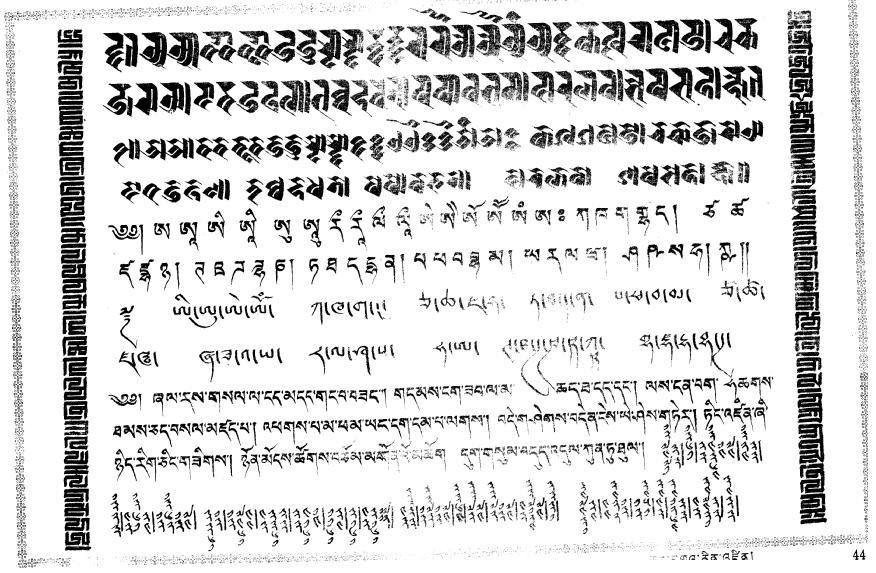
Source : Bod-kyi Yi-ge'i gZugs Ris བོད་ཀྱི་ཡི་གེའི་གཟུགས་རིས (Lhasa: Tibet People's Publishing House, 1999) page 44.
Tibetan Calligraphy by Tshe-tan Zhabs-drung ཚེ་ཏན་ཞབས་དྲུང
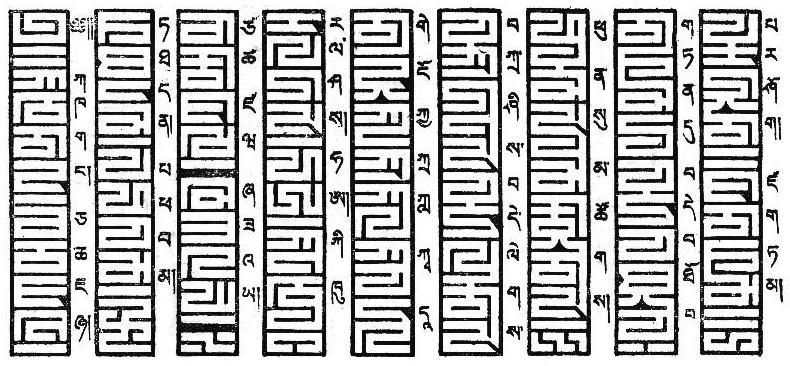
Source : Gangs-can mKhas-pa'i Phyag-bris sNa-tshogs Phyogs-bsdus Rin-chen Phreng-ba གངས་ཅན་མཁས་པའི་ཕྱག་བྲིས་སྣ་ཚོགས་ཕྱོགས་བསྡུས་རིན་ཆེན་ཕྲེང་བ (Lanzhou: Gansu People's Publishing House, 1990) p.170.
Index of BabelStone Blog Posts
